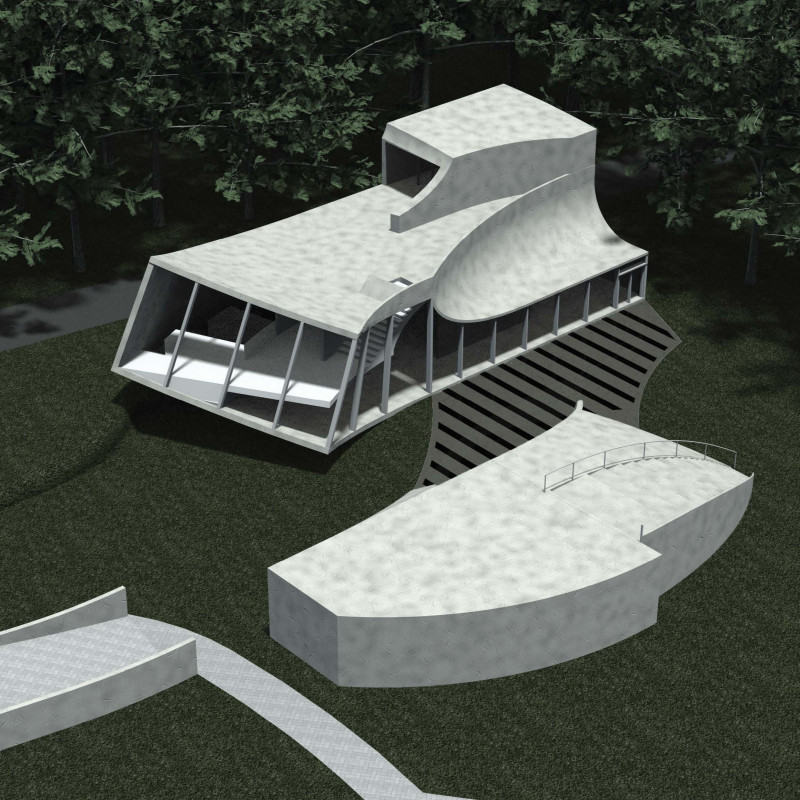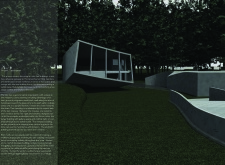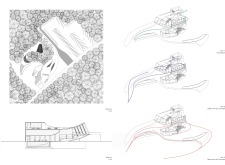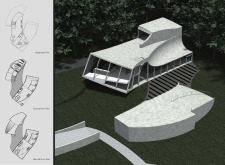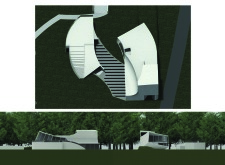5 key facts about this project
The design features a dual-building layout, which is strategically organized around a central plaza. This space acts as a hub for various activities, including ticketing, dining, and exhibitions. By placing these elements in close proximity, the project encourages seamless movement and interaction among visitors, allowing them to experience the site holistically. The spiral pathway system, designed to echo the natural contours of the landscape, enhances the user experience by guiding visitors through a narrative journey. This thoughtful arrangement fosters a sense of discovery, inviting users to explore the diverse features of the bog.
At the heart of the architectural design lies a fluidity that reflects the organic nature of the site. Building A, encompassing the gallery, café, and ticket booth, boasts dynamic forms that suggest movement and continuity. The building's angular design not only captures attention but also optimizes visitor flow. Meanwhile, Building B functions as the visitor center, housing amenities such as restrooms and areas for reflection, further enhancing the accessibility and enjoyment of the site. The connection between the two structures is intentional, facilitating interaction while remaining sensitive to the intricate relationship between human activity and the natural environment.
The materiality of the project plays a crucial role in its overall impact. A palette composed primarily of reinforced concrete, glass, and metal establishes a modern yet approachable aesthetic. The extensive use of glass on the façades allows for abundant natural light, creating an inviting atmosphere while fostering a strong connection with the outdoor surroundings. This transparency not only enhances the visual relationship between the interior and exterior spaces but also reduces reliance on artificial lighting, aligning with sustainability principles. The inclusion of natural landscaping, featuring native plants, integrates the architecture seamlessly with the bog's ecosystem, promoting biodiversity and environmental stewardship.
Unique design approaches are evident throughout the project, particularly in the way it addresses user experience and environmental integration. The project's layout prioritizes natural ventilation, enabling fresh air circulation throughout the structures without the need for mechanical systems. This focus on passive design strategies underscores the project’s commitment to sustainability, enhancing visitor comfort while minimizing energy consumption. The selection of materials also reflects a dedication to longevity and low maintenance, ensuring that the design stands the test of time while preserving the integrity of the ecological context.
This architectural design project exemplifies the potential of contemporary architecture to respond thoughtfully to its environment, creating spaces that enhance human interaction with nature. The integration of sustainable practices, user-friendly pathways, and a cohesive material palette culminates in a project that is both functional and contextually relevant. For those interested in a deeper exploration of this architectural endeavor, reviewing the architectural plans, sections, and overall designs will provide further insights into the innovative ideas that shape this project. Visitors are encouraged to delve into the presentation of the project to fully appreciate its design and architectural significance.


